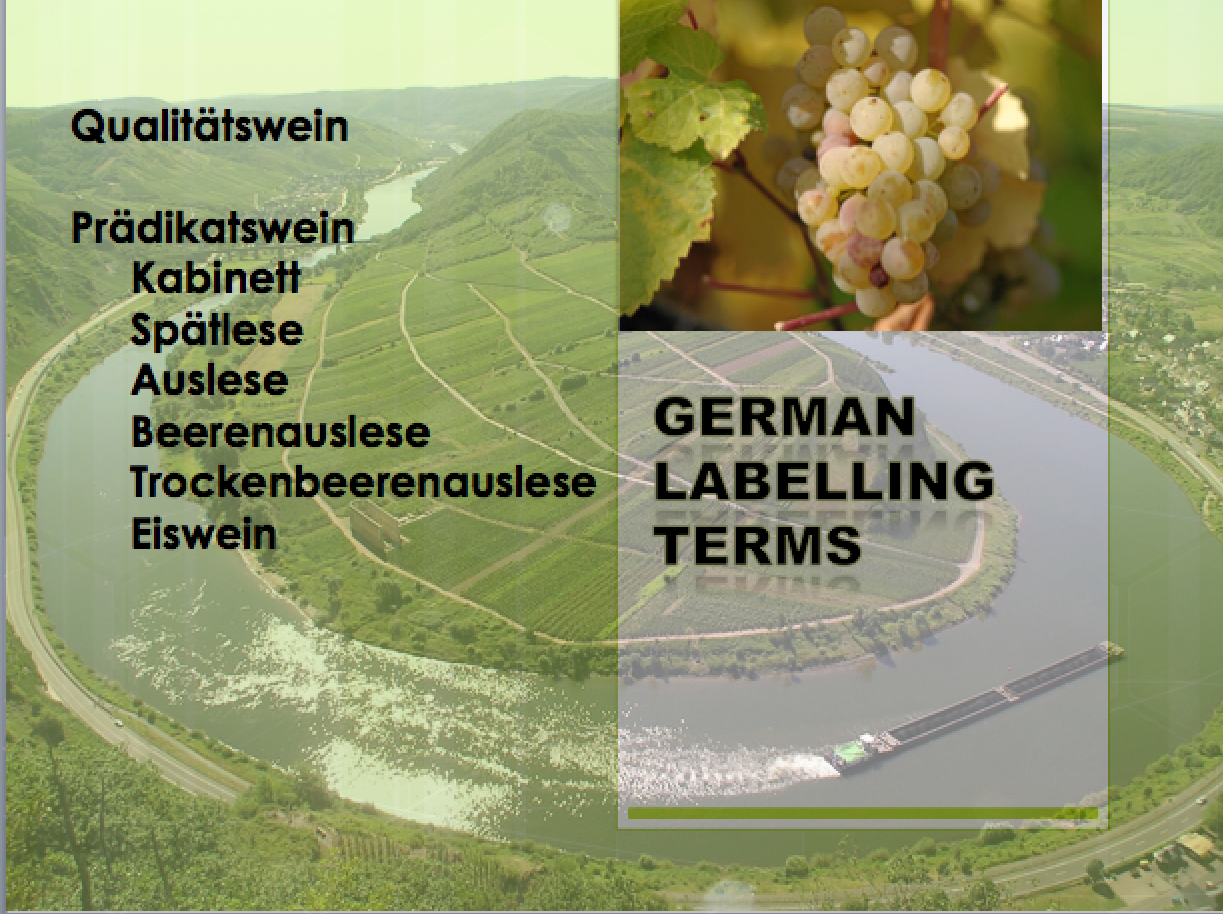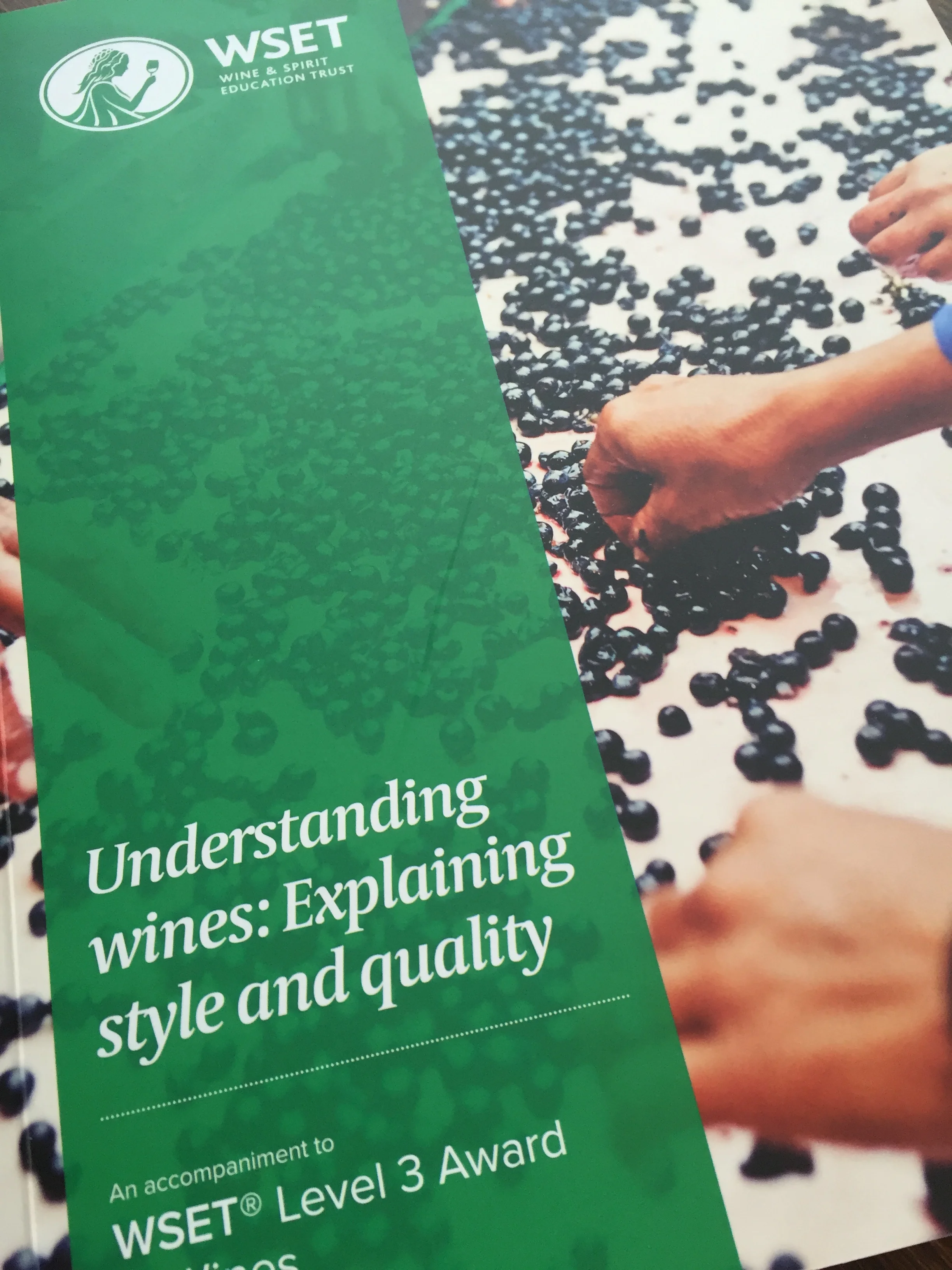WSET Educator Course
This blog has had a bit of a hiatus recently, as I was busy preparing for - and then doing - a WSET Educator Training course in San Francisco. The course was an intense, challenging, yet highly rewarding experience, which I feel has improved my teaching methods and helped me greatly understand what the WSET want students to learn from their courses - something I've wanted to get to the bottom of for a long time.
the course
Just to give an idea of the intensity of the course: I walked into the classroom at 8:30 on Monday morning, to be greeted by Master of Wine David Wrigley, who created the WSET Systematic Approach to Tasting and who was leading the course. At the back of the room sat another MW, Mary Ewing-Mulligan of the International Wine Center in New York, and two MWs in training, Jim Gore of the WSET and Mary Vari from Toronto's Independent Wine Education Guild. As introductions go, that's as intimidating as it gets.
Feeling intimidated at the beginning of the course is quite usual, though, and the friendliness and support of the teaching staff quickly became clear. Together with the tutors, the class, which featured students from the US, Canada, and Jamaica, formed a strong bond which saw us through some challenging sessions.
The first day was mostly spent learning about best teaching methods. My favourite advice for preparing a lesson was that you should create a list of topics where knowledge is assumed, those that must be covered, those that could be covered, and those that must not. As well as being a good preparation tool, this really clarified what was expected of students at the different WSET levels. Those levels are divided into Beginner (Level 1), Intermediate (Level 2), and Advanced (Level 3). An important thing I learnt is that Level 1 is aimed at those in the service industry wanting, or having, to do a one-day course, while Level 2 is for those who want a more in-depth knowledge of wine. However, both courses are for students who have no assumed prior knowledge.
Having learnt this, we were given a series of facts about Chablis to divide into assumed, must cover, could cover, and must not for a Level 2 class. Each group of would-be teachers placed the most basic facts about Chablis into assumed knowledge. As David pointed out, we'd all fallen into a carefully-laid trap: there is no assumed knowledge at Level 2.
Realising the difference between each level was one of the most valuable aspects of the course. Level 2 is, I finally learnt, called Understanding the Label for a reason: at the end of the level, students should be able to explain a wine label - what the wine tastes like, what the terms mean, what the grape varieties used are. Meanwhile, at Level 3, which is called Understanding Style and Quality, it's about the why - why the wine tastes like it does.
On the second morning, we were led through the WSET Systematic Approach to Tasting by Jim Gore, in which I had to give a tasting on a standard Marlborough Sauvignon Blanc. Again, most valuable was understanding the approach the WSET wants for each level: Level 1 is quite simple, learning about the different basic types and styles of wine; Level 2 is about how the taste of a wine reflects what's on the label; while Level 3 is about why the wine tastes like it does, going much further into describing its different structural elements.
I also learnt that the WSET are going to formally add BLIC (Balance, Length, Intensity, Complexity) to the Level 3 Systematic Approach to Tasting. This is a way of assessing the quality of the wine which, although not perfect, makes it clearer than before what students should be looking for in a wine when drawing conclusions on the wine's quality. Is the wine balanced? How long is the finish? How intense are the aromas? How complex is the wine? Although the student still has to write an accurate tasting note that logically leads to quality conclusions, using BLIC will help focus students when thinking about quality. (Another change when the WSET Level 3 is relaunched in August is that the spirits component of the book is to be removed, with a separate Level 3 for spirits to be created at some point.)
teaching
By far the most intimidating and challenging aspect was being assessed teaching. On the afternoon of the second day, we all had to give a 15-minute class on an assigned topic, in my case German labelling terms. Teaching the topic also required creating a PowerPoint presentation and a detailed session plan. Despite plenty of experience teaching, I have never been so nervous presenting in front of a class. Maybe it was the two MWs at the back of the room assessing me; maybe it was because all the pretend Level 2 students in my class were my peers already holding or studying for the Diploma. My presentation went well enough and got good feedback from both the assessors and the other students, but my throat was dry, I stammered for words, and wasn't as coherent as I wanted to be. Fortunately, the third day was mostly free to revise our presentations and work with fellow students to help us improve: the collegiate nature of the course definitely benefitted everyone's presentations and confidence, including my own.
assessment
The final day saw us being formally assessed, and after three days of learning, studying, and practising, I felt no way near as nervous as I did for the practice assessment.
The fifteen-minute class was immediately followed by a ten-minute tasting also at Level 2; in my case the wine was a Chianti Classico. Although we were only able to taste the wines a few minutes before our assessments, we had been promised that the wines would be typical of their region. My Chianti Classico was certainly that, and it was quite straightforward talking the class through the red fruits, high acidity, and medium tannins of the Sangiovese.
After the morning-long assessment, we all sat in a large room waiting to be called in and told whether we had passed or not. The hours passed as we waited, nervously joking with one another. Three hours later, I was finally called in to be told I had passed and I had the makings of a very good teacher.
This means I am now fully qualified to teach Level 2. Once I have finally finished the Diploma (just the fortified wine unit to go), I will have to return to become a fully accredited WSET Educator by teaching a Level 3 tasting and learning how to mark Level 3 papers. Then, I hope, I will never have to do an exam again.






